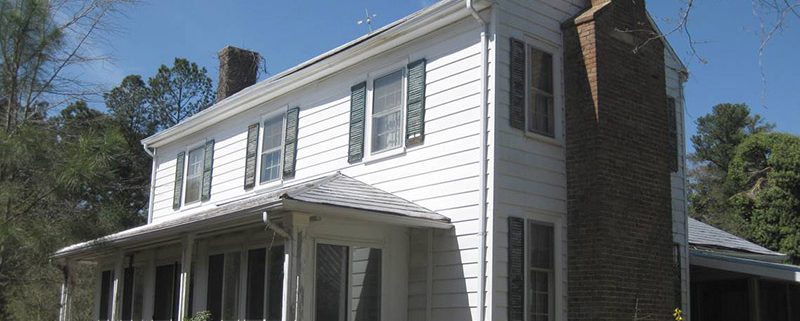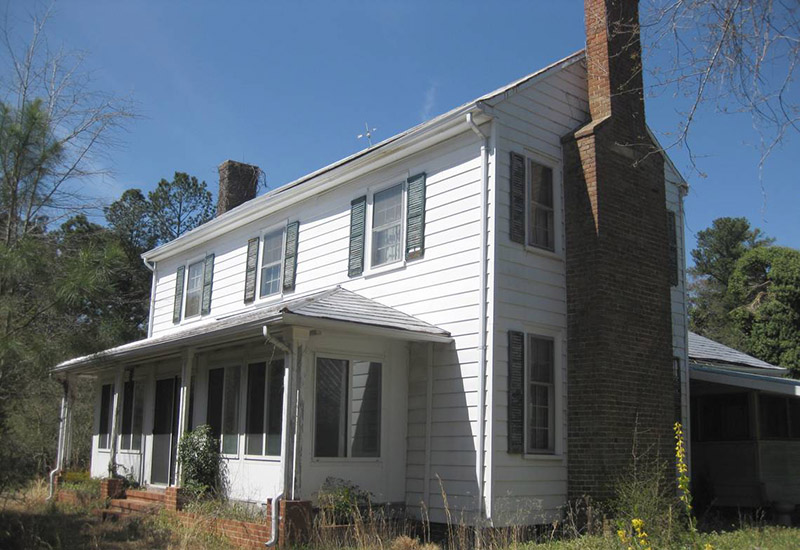Cary’s Heritage: Barnabus Jones Farm, Pt. 2
Cary, NC – A.J. Bartley and son Jon told us more about the Barnabas Jones farm after they bought it in 1957.
A.J. Bartley
I came to Cary in 1948 after finishing a master’s degree in Missouri. I taught economics and business at North Carolina State from 1948 until 1976 when I retired. I grew up on a farm, and bought this one close to the university.
In 1951, when Mr. Bringham bought it, the house had never been painted. He was going to convert it into a hog farm, but in 1957, he decided to sell it. There was a big lawn and some enormous trees in front, and fruit trees on the land, so we could raise fruit.
My time was limited, so I bought a flock of sheep to keep the grass down. We sheared the sheep and sold the wool to women who taught spinning and weaving. We had thirty or forty dairy cows, plus chickens, geese, and turkeys. They were mostly for our eating. Our main interest was in fruits and vegetables.
The tobacco farms along our country road were dying out, so the farmers kept their house and garden but began to sell their land to developers, who built houses all along Penny Road. We didn’t want that to happen to us. We had a couple of ponds and old trees that were three or four feet thick and a hundred years old. When Penny Road was built, it cut our farm right in half, with fifty acres on each side. The south side of the road where the house is was primarily farm fields and pastures. The north side was nothing but woods and ponds. Up on the north ridge is where the Indians once lived. When those fields were cultivated, we would pile up arrowheads and other things we dug up.
Jon Bartley
When I was a boy, the double chimney on the west side had separated a bit from the house. Bees got in between the brick and siding and built a huge hive between the upstairs flooring and downstairs ceiling. All while I was growing up, we’d hear them buzzing in the ceiling. A couple of times, we tried to get rid of the bees, without success. But when some honey started to leak through the ceiling, I helped Dad cut a hole in the floor upstairs into where the bees had been. We scooped out all the cone and honey that we could reach, and there was a lot of it still in there. That big hive had been there at least twenty years. The ceiling below is probably stained to this day from the honey.
The farm was sold to the town of Cary in 2000. The title of the land transferred to the town except for three-and-a-half acres that my father retained as a life estate which included the house, his garden and his barns, so as long as he lived, he could occupy that part of his land.
Story by Peggy Van Scoyoc. Photos by the Town of Cary. Much of Cary’s Heritage is taken from the book, Desegregating Cary, published in February, 2010. The book is a collection of oral history interviews conducted between local citizens and Friends of the Page-Walker Hotel. The rest comes from later oral history interviews with local citizens.





Thank you for the very interesting story of Cary’s History!
Tad